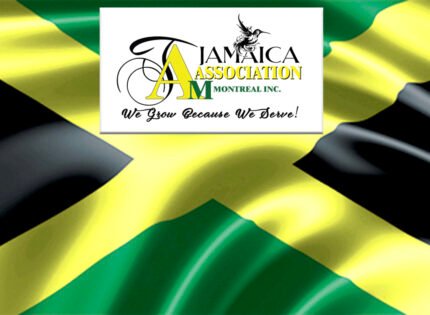 “Racism is not a system that can be reformed. It must be dismantled”
“Racism is not a system that can be reformed. It must be dismantled”
Canada has historically constructed its identity in opposition to the United States, taking pride in being unlike the latter, with its sordid history of slavery, segregation, assassinations, lynching, and riots. In Canada, the historical nursing record reveals a similar legacy of segregation and discrimination, which scholars argue remains prevalent today.
Anti-black racism is woven into the history of nursing in Canada and continues to be pervasively tied to the profession.
Nurses are essential in care delivery, policy directives and in shaping the health-care system..
Yet, Canada’s history of racism and segregation has contributed to residual anti-Black racism that remains present in Canadian nursing.
During the pandemic, nurses emerged as the nation’s frontline heroes, unbeknownst by many that the history of nursing in Canada attests to Black nurses being sidelined— relegated to virtual zeroes.
Background
Nursing, as a profession, was established on Victorian ideals of “true womanhood”, including notions of dignity, purity, morality and virtue.
It was believed that Black women did not possess these ideals of “true womanhood” and as such were prevented from pursuing nursing as a career.
Canada’s first training school for nurses is reported to have opened in 1874 at the General and Marine Hospital in St. Catharines, Ontario. Until the mid-1940s, due to the exclusionary policy of Canadian nursing schools, any young Black woman who dreamed of becoming a nurse was denied the opportunity.
Aspiring Black Canadian nurses were instructed to travel to and study in the United States, which began permitting the enrollment of Black people into nursing in the 1870s
WAR, PRESSURE & CHANGE
Bernice Redmon , a Toronto native was one of those nurses. Being refused entry to nursing schools in Canada, she went instead to St. Phillip Medical College in Virginia, and graduated in 1945 with her diploma.
When she returned to Canada that same year, she became the first Black nurse allowed to practice in public health after getting a job at the Nova Scotia Department of Health. Bernice later went on to become the first Black woman appointed to the Victorian Order of Nurses in Canada.
In 1947, Marisse Scott was devastated when she was not accepted into the Owen Sound Hospital’s nursing program. In high school she had been an honours student, and president of her student council , and always aspired to be a nurse.
“Sorry, we don’t accept colored girls,” she was told.
The hospital board’s decision to reject Scott “was based on the psychological effect on patients to have a Black nurse suddenly appear at their bedside,” said Reverend Allan Ferry in the Owen Sound Sun Times in September 1947. “I was told in all seriousness that such a situation might even kill the patient.”
That same year, with the support of local activists, Scott was eventually admitted to Guelph’s St. Joseph’s Hospital nursing school, and she completed her studies in 1950.
As the first Black woman to graduate from a nursing school in the province, Scott paved the way for young Black women from Canada and the Caribbean to transform the face of nursing in Ontario over the next few decades.
In September 1948, Ruth Bailey and Gwen Barton graduated from the Children’s Hospital in Halifax becoming the first Black women to graduate from a Canadian nursing school — almost 75 years after the country’s first nursing school had opened.
Bailey, whose home was Toronto, had gone to Nova Scotia after being rejected by every hospital in Ontario. Her sister Doris, after also receiving rejections, had gone to Tennessee. Their father, Joe Bailey, kept a scrapbook of the rejection letters. Although Ontario was at the time facing a profound nursing shortage, the barriers against accepting Black women into nursing school were particularly fierce.
According to Kathryn McPherson, professor of history at York University and author of Bedside Matters: The Transformation of Canadian Nursing, 1900-1990: until the late 1940s and ’50s, “there were very, very firm boundaries” against Black women in nursing schools. As she notes in her book, “these colour bars were usually unwritten and only received formal articulation when challenged.”
Due to the exodus of young men to the frontlines of the war, employment barriers for women were lowered. In 1948, Colleen Campbell and Marion Overton became the first Black women to graduate from Hôtel Dieu Hospital in Windsor, Ontario. they were trailblazers.
IMMIGRATION
The postwar era was turbulent for the Canadian health care system, and that turbulence was intensified by the shortage of nurses that persisted through the 1950s and 1960s.
Nevertheless, The Department of Citizenship and Immigration placed restrictions on the number of Caribbean migrant nurses allowed to enter Canada.
Ignoring urgent demands for hospital staff nurses, immigration officials relied on century-old stereotypes of Blacks as lazy and dishonest to deny entry to Caribbean and Haitian nurses. Regrettably, these decisions were often supported by nursing administrators who shared similar attitudes.
Investigations suggest that immigration officials were attempting to find evidence to support their claims that Caribbean nurses were not “suitable” citizens and were poor workers.
Individuals such as Pearline Oliver in Halifax, Nova Scotia, who wanted to be a nurse but feared rejection, and organizations such as the Nova Scotia Association for the Advancement of Coloured People (NSAACP) and Canadian Negro Citizenship, campaigned tirelessly, quietly, and eventually challenged the racially exclusionary policies of nursing schools, as well as those of Citizenship and Immigration Canada.
Individual Caribbean nurses and potential students whose applications were rejected by Citizenship and Immigration Canada also appealed to the state and Black organizations hoping to get their rejections reversed.
The Canadian Nursing Association declared in 1944 “that there be no discrimination in nursing,” but this formal elimination of racist barriers did not erase the structures of White privilege that were embedded in the occupation. Through the 1960s, nursing as a site of White privilege continued to be acknowledged in various media.
A review of literature, interviews and the analysis of official documents and policies showed that Canadian immigration policies effectively restricted and limited the entry of professional and skilled workers from the Caribbean.
One such policy, entitled Women of Exceptional Merit, required that in order to gain entry into Canada, Caribbean nurses demonstrate a level of merit, which far exceeded the professional qualifications of non-Black nurses. This policy dictated that Black nurses from the Caribbean could be granted temporary entry to Canada if they were deemed to be of “exceptional merit” and with a promise to return to their home countries after their transitory stay. This policy created systemic barriers in regulatory practices and work environments, which Caribbean nurses were forced to navigate.
The system of racism is continuously operating and does not require conscious participation, which is why it is so important to acknowledge the structural institutional forms—because they do not necessarily depend on the actions of individuals.
Another area of concern that directly impacts the Canadian nursing workforce is nursing education. Considering what is taught in nursing school, we see stark examples of anti-Black racism embedded within a curriculum that not only reinforces the invisibility of Black nurses but also exacerbates health inequities.
Canadian nursing curriculum has been criticized as relying too heavily on a Eurocentric ideological foundation that effectively reinforces prejudice, stereotypes and discrimination towards specific groups.
Until recently, most nursing curricula omitted content that incorporated the experiences, contributions or basic existence of Black nurses in Canada. Conclusively, much has changed in Canadian health care since the 1960s, but racism remains ingrained in the system.















